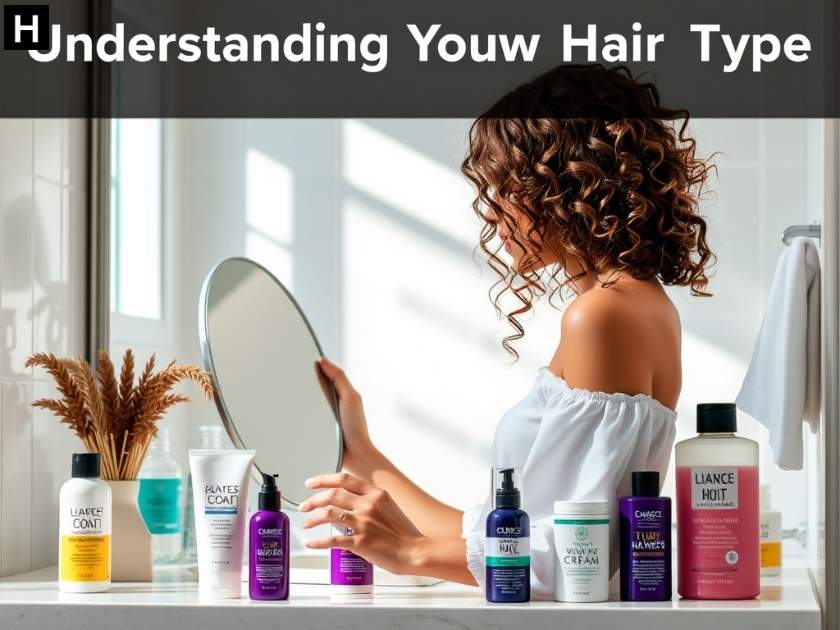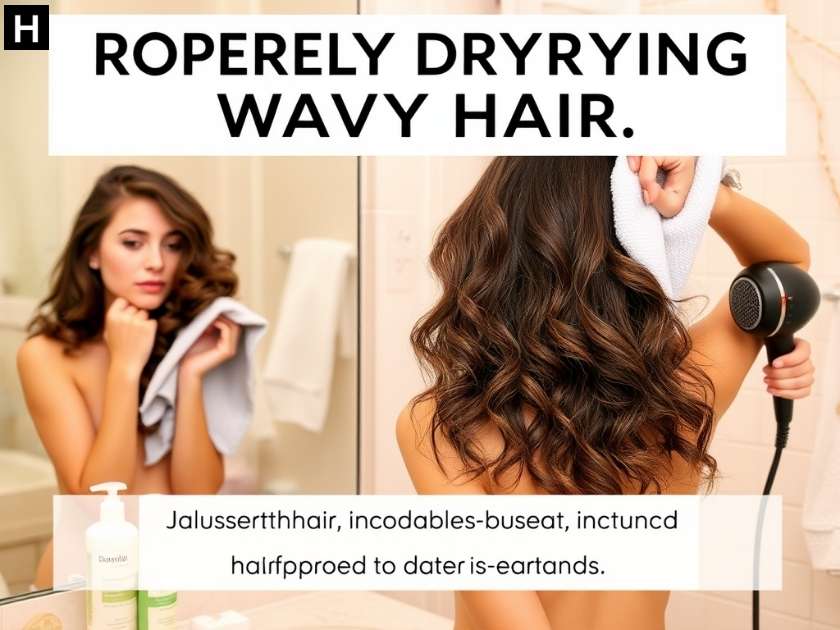Wavy hair is effortlessly beautiful but can be tricky to manage. It falls between straight and curly, often needing special care to enhance its natural shape. Without the right routine, waves can become frizzy, limp, or undefined.
This guide will help you style naturally wavy hair with ease. From choosing the right products to mastering drying techniques, you’ll learn how to keep your waves smooth, bouncy, and frizz-free. Whether you want soft, beachy waves or well-defined texture, these expert tips will transform your hair game.
Understanding Your Wavy Hair Type

Wavy hair comes in different textures, mainly 2A, 2B, and 2C. 2A is fine and loose, making it easy to style but prone to limpness. 2B has more defined S-shaped waves with moderate frizz. 2C is thick, coarse, and leans towards curls with strong wave patterns.
Each type needs specific care to maintain definition. 2A benefits from lightweight products to avoid weighing it down. 2B requires moderate hydration to balance waves and control frizz. 2C needs intense moisture and anti-frizz treatments to keep waves bouncy.
Pre-Styling Hair Care Routine
A strong foundation starts with proper cleansing. Use sulfate-free shampoo to prevent stripping natural oils. Conditioners with hydrating ingredients like aloe vera and shea butter help lock in moisture. Washing 2-3 times a week keeps hair balanced without over-drying.
Brushing before washing prevents knots and breakage. After shampooing, use a wide-tooth comb on damp hair to minimize frizz. Leave-in conditioners add extra hydration and make styling easier. Keeping hair nourished enhances natural waves effortlessly.
Properly Drying Wavy Hair

Drying techniques affect wave definition and frizz control. Air drying is best, but using a microfiber towel reduces friction. Regular towels roughen the hair cuticle, causing breakage and puffiness. Plopping with a cotton t-shirt encourages waves to form naturally.
For quick drying, a diffuser attachment on a low-heat setting is ideal. It enhances waves while preventing excess heat damage. Avoid touching wet hair too much, as this disrupts wave patterns. Letting hair dry in its natural state improves texture and bounce.
See More: How to Style Thick Hair for a Sleek and Manageable Look
Best Styling Products for Wavy Hair
The right products enhance natural waves without causing buildup. Lightweight leave-in conditioners provide moisture without heaviness. Curl-enhancing creams define waves, while mousses add volume. Alcohol-free gels help hold the shape without making hair crunchy.
Oils like argan, jojoba, or coconut boost shine and softness. They also act as natural frizz controllers without making hair greasy. Applying products to damp hair ensures even distribution. Finding the right combination keeps waves fresh and defined all day.
Heat-Free Styling Methods
Avoiding heat keeps hair healthy and damage-free. Scrunching with a curl-defining gel helps waves form naturally. Braiding damp hair overnight creates soft, even waves. These methods enhance texture without dryness or split ends.
Twisting small sections and pinning them adds natural curls. The pineapple method tying hair in a loose bun preserves waves while sleeping. Using silk scarves or bonnets minimizes friction and prevents flattening. These simple techniques protect waves and maintain volume.
Using Heat Tools the Right Way
If heat styling is necessary, proper precautions are essential. Always use a heat protectant spray before applying any hot tool. Diffusers enhance natural waves, while curling wands define loose waves. Keep the temperature low to avoid excess dryness.
Overusing straighteners weakens the hair structure. Limit heat exposure and opt for ceramic or tourmaline tools that distribute heat evenly. Never style soaking wet hair with heat, as it leads to severe damage. Using heat sparingly keeps waves strong and resilient.
How to Tame Frizz and Enhance Shine
Frizz occurs due to lack of moisture and environmental factors. Hydrating masks and serums smooth the hair cuticle. Regular deep conditioning prevents dryness, making hair softer and shinier. Avoiding harsh shampoos helps maintain moisture levels.
Sleeping on a silk or satin pillowcase reduces friction and breakage. Using a small amount of lightweight oil seals in hydration. Avoiding excessive brushing keeps waves intact. Proper hydration and protection ensure glossy, manageable waves.
Best Hairstyles for Naturally Wavy Hair

Wavy hair is flexible and suits various styles. Loose beach waves offer a relaxed, effortless look. Half-up, half-down hairstyles add dimension while keeping hair away from the face. These styles work for both casual and formal settings.
Braided hairstyles enhance wave patterns and reduce frizz. Messy buns and ponytails maintain movement without flattening hair. Layered haircuts give waves a fuller, more voluminous appearance. Choosing the right style complements natural texture beautifully.
Common Mistakes to Avoid
Overwashing strips natural oils, making waves dry and lifeless. Using the wrong shampoo can lead to buildup and dullness. Always choose sulfate-free formulas to retain moisture. Too much product can also weigh down waves, making them look limp.
Brushing dry hair causes excessive frizz and breaks wave patterns. Instead, detangle hair when damp using a wide-tooth comb. Skipping heat protection results in long-term damage. Avoiding these mistakes keeps waves healthy and defined.
Seasonal Hair Care Tips
Different seasons affect wavy hair in unique ways. Winter air is dry, leading to brittle strands. Using heavier conditioners and protective styles helps maintain moisture. Summer humidity increases frizz, making lightweight anti-humidity products essential.
Spring and fall require balanced hydration and gentle styling. Switching between light and deep conditioning prevents seasonal damage. Adjusting hair care routines based on weather changes keeps waves in top condition year-round.
See More: How to Style Short Hair for Women: Best Looks for Every Occasion
Conclusion
Naturally wavy hair thrives with the right care routine. Hydration, gentle styling, and proper drying methods enhance wave definition. Avoiding excessive heat and choosing suitable products maintain healthy texture.
Each hair type reacts differently to styling methods, so experimentation is key. Finding what works best ensures effortless, long-lasting waves. With consistency and proper techniques, wavy hair stays strong, shiny, and full of life.
FAQ’s
How Often Should I Wash Wavy Hair?
Wavy hair should be washed 2-3 times a week to prevent dryness. Overwashing strips natural oils, making waves frizzy and unmanageable.
Can I Brush My Wavy Hair?
Avoid brushing dry wavy hair, as it causes frizz and breakage. Instead, use a wide-tooth comb on damp hair to detangle gently.
What Is the Best Pillowcase for Wavy Hair?
A silk or satin pillowcase reduces friction and prevents frizz. It helps waves stay defined and smooth while you sleep.
How Do I Add Volume to My Wavy Hair?
Use a lightweight mousse or volumizing spray at the roots. Diffusing upside down also creates lift without flattening waves.
Why Do My Waves Fall Flat Quickly?
Heavy products or excess touching can weigh waves down. Use lightweight stylers and scrunch hair while drying for better hold.